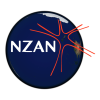Professor Kathy Campbell of University of Auckland and NZAI talks about the sixth mass extinction on Radio Live. Click here to listen to her interview.
Radio Live – 23 June 2015
Kathy Campbell is also known as the @StoneHistorian and you can follow her on Twitter or Facebook.
Are we entering the Sixth Global Mass Extinction, caused by cumulative human impacts on the planet? New research (Ceballos and others, Science Advances, 19 June 2015) suggests we are rapidly heading that way owing largely to human induced habitat loss and pollution. Scientists agree on 5 Big Mass Extinctions ever since a good fossil record began accumulating in the rock layers, starting about 545 million years ago. These range from the end of the Ordovician (443 million years ago) mass extinction, with >80% of sea life wiped out and possibly caused by a Super Nova explosion, to the end-Cretaceous event (65.5 million years ago), famous for the demise of the dinosaurs and likely caused by impact of a 10-km-diameter comet or asteroid (bolide). It took many years of painstaking accumulation of strange mineralogic and organic evidence for the ET impact theory to be accepted by most scientists, culminating with locating Ground Zero, buried under 1000 meters of younger sediments in the Yucatan peninsula. The same might be said for the notion of a 6th Mass Extinction. Indeed, there has been much debate and evidence piling up that species extinctions above natural background levels have been accelerating, since the first wave of hominid migration out of Africa and around the planet. The new data now quantitatively show that vertebrate species losses over the industrialization period of the last century have been >100 times the background extinction rate. In order to stem the tide of species die-offs, large scale conservation efforts across the oceans and continents need to be instigated, or we risk upsetting the ecological balance of Earth and putting us all in grave danger of extinction ourselves.
Kathy Campbell
Featured picture
Professor Campbell’s comments on the above foto:
The holes are drilling locations to trace geochemistry and biotic change studies across the boundary. Woodside Creek is very important because it was one of only 3 sites used in the original 1980 paper by the Alvarez research team who hypothesized the impact. The idea was to use a location very far from the European sites in Italy and Denmark to show that whatever happened to form the clay layer (now known to be the residue of the impact event) was a global event. This means that New Zealand biostratigraphic studies were well advanced and globally known such that the American team took note of the research and utilized it to construct a convincing hypothesis. The researchers included the father-son team of a Nobel Prize winning physicist and a sedimentologist – more grist for the mill that Astrobiology takes on many guises and is best practiced across disciplines.







